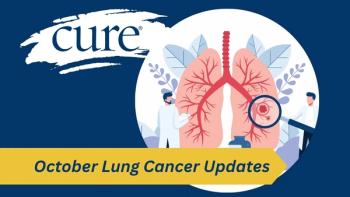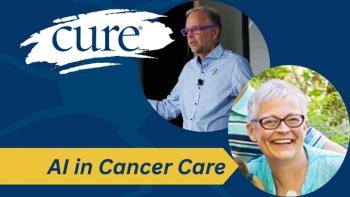
Breast Cancer Journeys and the Quest to Feel Normal Again
Key Takeaways
- Breast cancer journeys involve redefining "normal," with advances in reconstruction offering personalized options for patients post-mastectomy.
- Loss of chest sensation post-mastectomy can impact daily life, safety, and emotional well-being, highlighting the importance of sensation restoration.
A patient advocate says that patients with breast cancer may find it challenging to feel "normal," but reconstruction advancements may help.
Many of us who’ve been through breast cancer journeys have felt that, said that, cried that, questioned that and probably felt everything in between as we tried to wrap our minds around our individual experiences — whether our breast cancer journey has included an active diagnosis or taking preventative measures due to a high lifetime risk.
It can be a long, arduous and nonlinear path toward finding “normal” again.
What even is “normal?”
While it can mean different things to different people, there does seem to be one ubiquitous characteristic across the spectrum of “normal”— to feel.
I’ve heard it from patients I’ve worked with at a cancer center where I’m the program director, supporting patients with breast cancer as they navigate through their journeys. And I’ve spoken with others from across the country on a volunteer basis who’ve shared similar wants and experiences.
For me, I wanted natural-feeling and -looking breasts after my prophylactic mastectomy. I wanted to maintain my silhouette, and I didn’t mind if I had slight asymmetries in my reconstruction because I knew those would help me feel like me.
I’ve learned — and continue to learn — what “normal” can mean.
Over the last couple of decades, advancements in reconstruction options have enabled us to each look like our own “normal.” So that as the scars fade and emotions get processed, we’re in a version of our bodies we can learn to be okay with. This is a big leap forward from my grandma’s generation when there weren’t any options.
And lately there’s been more of a focus on being able to actually feel—through restoring sensation in the chest.
Chest sensation is something I get asked about regularly in my work. While I don’t have a medical background — I’m just passionate about helping others through their cancer journeys — part of my job is helping patients prepare for appointments by discussing what they can expect, talking through coping mechanisms and answering questions they might have.
And something we talk about frequently is how the literal feeling of sensation will change, especially post-mastectomy, including how restoring sensation to the chest can be possible, what the new “normal” might feel like and how it can affect relationships.
When I got my prophylactic mastectomy, sensation was still really important to me, but I didn’t have such an option. I want others to know they don’t have to accept the same reality.
To help the learning process and potentially inspire conversations with your care team, here are some of the sensation-related questions I get asked most frequently.
I Can Lose Sensation in My Chest? How?
If you are getting a mastectomy, it is, unfortunately, quite common to lose sensation in the chest, often to the point of numbness. This happens when nerves are cut — an unavoidable part of any surgery — to remove the breast tissue and nothing is done to repair the nerves.
Nerves enable us to feel touch, temperature and pain, and they run throughout our entire bodies. When nerves are cut, they lose their ability to send signals to the brain, resulting in numbness that is often permanent.
How Would Losing Sensation in My Chest Affect My Everyday Life?
Think of every time you take a shower. Step out into the sunshine. Hug a loved one. And on a more personal note, have physical and emotional intimate experiences.
Those moments would essentially be gone. They’d lose their power that connects us to ourselves and the world around us because you’d no longer be able to feel them.
Not being able to feel also poses a safety risk.
Sunburns, cooking-related injuries, bra underwires poking into skin, curling or flat irons touching skin, heating pads being too hot or left on for too long — those with chest numbness are at a higher risk of experiencing everyday injuries that could be avoided.
Beyond the physical ramifications, chest numbness affects how we perceive our quality of life in an emotional sense too. Not being able to feel, sometimes sweeping as far as from the clavicle to the belly button, can be incredibly disorienting and distracting from daily life. Getting dressed can feel awkward. It can be embarrassing if a swimsuit top becomes unknowingly askew, or workout clothes aren’t secure. That part of your body can feel like it’s no longer part of you. Living with numbness can be a constant reminder of your cancer journey.
What Can Be Done So That I Can Have Sensation?
It’s possible to regain sensation following mastectomy through breast neurotization, a surgical technique that has the potential to restore sensation to the chest over time. It requires two surgeons to complete — a breast surgeon, who performs the mastectomy, and a plastic reconstructive surgeon, the one who performs the reconstruction.
During the mastectomy, the breast surgeon identifies nerves that might be suitable for neurotization, communicating what they’re seeing to the plastic surgeon. They set a critical foundation so the plastic surgeon can connect the identified nerves to an allograft during reconstruction.
Surgeon teams who are trained in the technique will be able to give you a more specific vision of how they plan to approach your case.
What Can I Expect After?
Everyone’s experience is different, from where sensation starts to return first to how fast it returns. It’s normal for it to take 18 months to two years for it to return, but less than that is also normal. Some patients have shared that they feel zaps and tingles — which is a good sign the nerves are starting to regrow.
Where Do You Recommend Looking for More Information?
As always, the information I share doesn’t replace speaking with your care team. Consult with them on what’s possible and if they offer breast neurotization. Beyond that, connect with others in the breast cancer community to learn more about and from their experiences.
It gives me so much hope that with each generation, the future of breast cancer care will be better off. I’m hopeful for my daughters and others like them, who will one day have to face their own journeys and make their own tough decisions. I hope that the options continue to prioritize what patients want and need, removing cancer more effectively and enabling fuller lives to be led — until breast cancer is gone for good.
Janet Gerlach is the program director at the Friedman Center for Breast and Lymphatic Surgery, where she lives out her passion for patient advocacy. She also coordinates the team, builds relationships and leads community events.
For more news on cancer updates, research and education, don’t forget to





